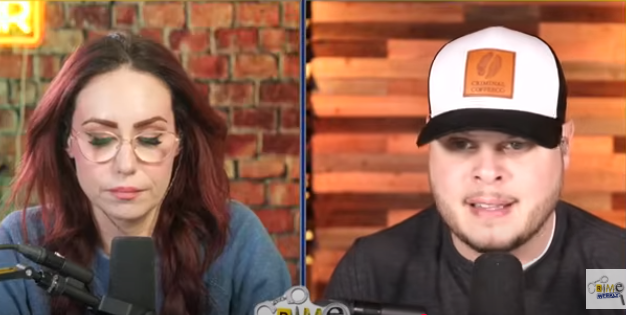Baltimore’s Radical Approach to Reducing Gun Violence: A Model for Change
In recent years, Baltimore has gained national attention for its remarkable reduction in gun violence. Once considered a prime example of big city crime, the city is now being hailed as a model for turnaround efforts. Over the past few years, gun violence has dropped more rapidly in Baltimore than in any other major U.S. city. One of the key contributors to this success is an innovative program that taps into the expertise of those who once perpetuated violence—individuals with criminal records who are now working to prevent crime.

The Role of Safe Streets Baltimore
At the heart of this effort is Safe Streets Baltimore, a city-run anti-violence program that takes an unconventional approach to reducing crime. Rather than relying solely on traditional law enforcement methods, the program actively involves people with firsthand experience in violence. These individuals, who have criminal records, are now employed to work in neighborhoods where crime has historically been most rampant.
The program was designed to leverage the unique insights and relationships that people with such backgrounds have within their communities. One of its central goals is to prevent violence before it escalates by fostering connections with those who are most likely to be involved in criminal activity. The program’s strategy is based on the belief that people who have lived through the challenges of violence and crime are often the most effective messengers for change.
A Personal Journey of Change
One such person is Sean Wees, a former drug dealer who has become a key figure in Safe Streets Baltimore. Wees’s story is a powerful testament to the potential for change. Raised in South Baltimore, he grew up in an environment defined by crime and violence. He admits to having been part of a circle of killers, a lifestyle that inevitably caught up with him. The tragic turning point in his life came in 2015 when his younger brother, Nadeem, was murdered in a shooting. Nadeem’s death was part of a violent trend in the city, as Baltimore recorded nearly 300 shooting deaths that year.
Wees describes the pain and emptiness he felt after losing his brother. “My soul just was like… gone,” he says, reflecting on the deep emotional toll the tragedy took on him. But this heart-wrenching experience ultimately led him to reevaluate his life. Wees joined Safe Streets Baltimore, driven by the desire to make a difference in the very community where he had once contributed to the violence.
Working in the Streets of Baltimore
As part of the Safe Streets team, Wees and his colleagues patrol the streets of high-risk areas, wearing bright orange uniforms that set them apart as members of the program. These individuals are not just walking through the neighborhood—they are actively engaging with residents, offering support, and working to de-escalate tensions before they lead to violence. The Safe Streets team provides critical resources, including food, job training, and other forms of assistance. They work to build trust with the community and provide a sense of hope in neighborhoods that have long struggled with poverty and crime.
One of the significant successes of this program was seen in the neighborhood of Brooklyn, a particularly tough area in South Baltimore. Under the watch of Safe Streets, Brooklyn went a remarkable 472 days without a single homicide. This accomplishment is a testament to the effectiveness of the program’s approach. The city-wide reduction in gun deaths has been equally impressive, with shootings dropping by 45% over the last six years. These statistics highlight the growing impact of community-driven violence intervention efforts.
A Growing Movement
Baltimore’s success is not an isolated case. Across the United States, cities such as Chicago and Philadelphia have implemented similar programs with promising results. According to advocates for gun safety, such as the organization Everytown, violence intervention programs have contributed to a decrease in shootings and killings by more than 30% in some areas. These programs, which often focus on community-based solutions, have proven that addressing the root causes of violence through engagement and prevention can be far more effective than relying solely on police force.
Challenges and Ongoing Efforts
Despite the progress that has been made, Safe Streets Baltimore and other similar programs acknowledge that there is still much work to be done. Brandon Scott, the mayor of Baltimore, emphasizes the importance of continuing to invest in such programs, even in the face of skepticism from some critics. “If we want to solve and cure this disease, we have to go to the people who understand it better than anybody else,” Scott says, defending the decision to hire individuals with criminal records to help in the fight against violence.
While the results of these programs have been encouraging, both local leaders and participants recognize that the work is far from finished. The fight against violence is ongoing, and there is a collective determination to continue building on the progress made thus far. For Wees and others involved in Safe Streets, the program offers more than just a job—it represents a chance to heal both themselves and their community.
A Hopeful Future
As Baltimore continues to address its violent crime problem, the success of programs like Safe Streets is offering a glimmer of hope. Through programs that employ people with criminal records to prevent violence, the city is taking a radically different approach—one that looks at the problem of crime not just through the lens of law enforcement, but through the eyes of those who have lived it. This approach not only changes the lives of those directly involved but also has the potential to transform entire communities.
For Wees and his team, the work they do is about more than just reducing violence—it’s about creating a sense of safety, trust, and hope for a better future. As they walk the streets of Baltimore, their message is clear: change is possible, and it starts from within the community.






